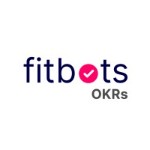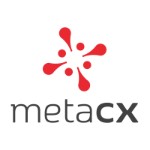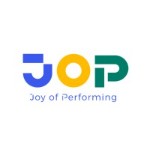You’re about to embark on an exciting journey into the world of OKR tools. Now, I know what you might be thinking: “Another business tool? Really?”
But trust me, this is one adventure you don’t want to miss out on. OKR tools are not just any tools; they’re the game-changers, the secret sauce to transforming the way your business operates. And I’m here, your trusty guide, to lead you through every twist and turn of this path.
Setting the Stage: The World of Business Goals
Let’s set the stage first. In the ever-evolving business landscape, staying ahead isn’t just about working hard; it’s about working smart.
And how do you work smart? By setting clear, achievable goals. But here’s the catch – it’s not just about setting goals; it’s about tracking and achieving them. This is where OKRs (Objectives and Key Results) come into the picture.
The Evolution of Goal Setting
Back in the day, businesses set goals, but they were often vague, hard to track, and even harder to achieve. Fast forward to the 1970s, and enter OKRs.
Developed at Intel and later popularized by Google, OKRs revolutionized how goals are set and achieved in the business world. They brought in a new era of focus, alignment, and commitment to measurable results.
The Role of OKR Tools in This Evolution
Now, while OKRs are brilliant, they’re not self-executing. This is where OKR tools strut in. These tools are the vessels that carry the essence of OKRs.
They’re like the GPS systems in our cars – guiding, tracking, and recalibrating our journey towards our destination (or in this case, our business objectives).
A Personal Anecdote: My Introduction to OKRs
Let me share a bit of my journey. I first stumbled upon OKRs a few years back. Back then, I was like any other business enthusiast – eager to achieve, but not entirely sure how.
I was setting goals, but they felt more like wishes thrown into a well, hoping for the best. Then, I was introduced to OKRs, and soon after, to OKR tools. It was a game-changer. For the first time, my team and I had a clear roadmap. We knew where we were going and how to get there.
The Misconceptions: Clearing the Air
Before we dive deeper, let’s bust some myths. Many people think OKRs and OKR tools are for the “big players,” the Googles and Intels of the world. But here’s the thing – they are incredibly versatile and scalable. Whether you’re a startup, a small business, or a multinational corporation, the best OKR tools can be tailored to your needs.
The Journey Ahead
In this guide, we’ll explore the nooks and crannies of OKR tools. Why they’re essential, how to choose the right one for your business, and how to use them effectively.
I’ll share insights from industry experts, personal experiences, and practical tips to help you master OKR tools.
So, whether you’re a seasoned pro looking to refine your approach or a newcomer ready to explore the world of OKRs, there’s something here for everyone.
Let’s turn those ambitious goals into tangible successes. Ready to dive in? Let’s get started!
Summary: OKR tools are transformative in goal setting and achievement in business. This guide will explore their importance, versatility, and practical application for businesses of all sizes.

Why OKR Tools are a Game-Changer
The Birth and Evolution of OKRs
Let’s rewind to the 1970s. Andy Grove at Intel introduced OKRs, and they’ve been a cornerstone in business strategy ever since. Picture this: a world where goals were often ambiguous and tracking progress was like shooting arrows in the dark. OKRs changed that.
They introduced a structured framework for setting ambitious yet achievable goals. But the real magic happened when John Doerr, one of Grove’s disciples, introduced OKRs to Google.
This move not only validated the effectiveness of OKRs but also set a precedent for other companies to follow.
The Impact of OKRs in the Modern Business World
Fast forward to today, and OKRs are not just a tool; they’re a philosophy adopted by successful companies worldwide. The reason? They bring clarity, focus, and a sense of direction. OKRs challenge teams to think big, yet keep them grounded with measurable key results. They bridge the gap between ambition and reality.
The Game-Changing Nature of OKR Tools
Now, enter OKR tools – the engines that power this philosophy. Think of OKRs as the blueprint and OKR tools as the builders. These tools take the theoretical aspects of OKRs and turn them into actionable, trackable, and manageable tasks.
They are the catalysts that ensure the dynamic potential of OKRs is fully realized in the practical business environment.
Clarity and Focus
OKR tools cut through the noise. They help teams understand what’s crucial and discard what’s not. By clearly outlining company objectives and the key results needed to achieve them, these tools ensure everyone is aligned and focused on the right targets.
Alignment and Commitment
Alignment is crucial in any organization, and OKR tools excel in this. They ensure that individual goals are aligned with the company’s vision. This alignment fosters a sense of commitment and purpose, as every team member understands their role in the bigger picture.
Tracking Progress
One of the most significant advantages of OKR tools is their ability to track progress in real-time. They provide visual representations of how close you are to achieving your key results, making adjustments and recalibrations a breeze.
Motivation and Engagement
Achieving key results can be incredibly motivating. OKR tools make these achievements visible and celebrate progress, boosting a team’s performance and morale. They turn abstract goals into tangible milestones, creating a culture of success and continuous improvement.
Data-Driven Decision Making
In today’s world, data is king. OKR tools provide invaluable insights and data, allowing leaders to make informed decisions. They help identify trends, uncover potential issues, and provide a clear picture of what’s working and what’s not.
In Summary: A Transformational Tool for Modern Businesses
In essence, OKR tools are not just about setting goals; they’re about transforming how those goals are achieved. They bring a level of precision, clarity, and engagement that traditional goal-setting methods lack.
Whether you’re a small startup or a large corporation, OKR tools can revolutionize the way you work towards your objectives.
Summary: OKR tools revolutionize goal setting by providing clarity, focus, alignment, real-time goal progress and tracking, and data-driven decision making, making them indispensable in modern business strategy.

Choosing the Right OKR Tool
Selecting the perfect OKR tool for your organization can be akin to finding a needle in a haystack. With so many options out there, how do you pinpoint the one that aligns with your unique business needs? Let’s break it down.
Key Features to Consider in an OKR Tool
User-Friendly Interface
First and foremost, intuitive user interface: the tool should be intuitive and easy to navigate. A complex or cumbersome interface can be a significant barrier to adoption. You want a tool that your team can comfortably use without a steep learning curve.
Customizability
Every business is unique, and so are its objectives. A good OKR tool should offer the flexibility to tailor its features to align with your specific goals and business processes. Whether it’s customizing dashboards or tweaking the metrics, the tool should adapt to you, not the other way around.
Integration Capabilities
In our interconnected digital world, a tool that exists in isolation is a tool half utilized. Your OKR tool should seamlessly integrate with other software systems you use – be it project management software, CRM, or communication tools. For example Microsoft Teams or Google Sheets. This integration ensures a smooth workflow and helps avoid the silo effect.
Analytics and Reporting
Data-driven insights are crucial for informed decision-making. The right OKR tool should provide robust analytics and reporting features that allow you to track progress, identify trends, and measure success effectively.
Collaboration Features
The spirit of OKRs lies in teamwork and collaboration. The tool you or project management platform you choose should facilitate these aspects, allowing team members to share insights, update progress, and communicate efficiently within the platform.
My Personal Experience with OKR Tools
From my journey with various OKR tools, one lesson stands out: the best tool is the one that fits seamlessly into your existing workflow. I once worked with a tool that, although feature-rich, was so complex that it barely got used. It’s not about the number of features; it’s about the right features that work for you.
Avoiding Common Pitfalls
When selecting an OKR tool, keep an eye out for these traps:
Overcomplicating Things: A tool with too many bells and whistles can be more of a hindrance than a help.
Ignoring the Learning Curve: Consider the time and resources required for your team to adapt to the new tool.
Forgetting About Scalability: Ensure that the tool can scale with your business. What works for a team of up to five users or 10 might not suffice for a team of 100.
In summary, the right OKR tool should be user-friendly, customizable to your needs, integrate well with your existing systems, offer strong analytics, and support collaboration.
Remember, the goal is not just to have an OKR tool but to have one that truly enhances your ability to achieve your objectives.
Summary: Choose an OKR tool that is intuitive, customizable, integrates with other systems, provides strong analytics, and supports collaboration. Avoid complexity, consider the learning curve, and ensure scalability.

Implementing OKRs with the Right Tool
Alright, you’ve chosen your own best OKR software solution and tool. It’s like finding the perfect pair of hiking boots for a challenging trail. Now, how do you make sure you get the most out of this hike? Here’s how you can implement OKRs effectively using your chosen tool.
Best Practices for Implementation
Start Small
You wouldn’t attempt to scale Everest on your first day of hiking, right? Similarly, start with a pilot program or a single department before rolling out OKRs across the entire organization. This approach allows you to test the waters, make adjustments, and learn what works best for your individual and team goals.
Train Your Team
A tool is only as good as the people using it. Invest time in training your customer support team on how to use the OKR tool effectively. Make sure they understand not just the ‘how’ but also the ‘why’ behind using this tool. This understanding is crucial for buy-in and effective use.
Set Clear Objectives
Clarity is the soul of OKRs. When setting objectives, be as clear and specific as possible. Use the SMART criteria (Specific, Measurable, Achievable, Relevant, Time-bound) to ensure your objectives are well-defined and attainable.
Regular Check-ins
Set up regular check-ins to review progress on your OKRs. These could be weekly, bi-weekly, or monthly, depending on what works best for your team. Regular reviews help keep everyone on track and make it easier to identify and address issues early on.
Encourage Collaboration
OKRs thrive on teamwork. Use your own OKR coaching framework and coaching tool to foster an environment of collaboration. Encourage team members to share updates, challenges, and successes. A collaborative approach ensures everyone feels involved and accountable for the shared objectives.
My Tips from Experience
Through my own experiences with implementing OKR tools, here are a few nuggets of wisdom:
Keep It Simple: In the beginning, it’s easy to get carried away and set too many objectives. Focus on a few key ones that really matter.
Be Flexible: Sometimes, objectives need to change due to unforeseen circumstances. Be prepared to adapt your OKRs as needed.
Celebrate Achievements: Recognize and celebrate when key results are or high level objectives are met. This not only boosts morale but also reinforces the value of the OKR process.
Common Mistakes to Avoid
Setting Unrealistic Goals: Over-ambitious goals can be demotivating. Aim high, but stay grounded in reality.
Neglecting Regular Updates: Failing to regularly update your OKRs can lead to them becoming irrelevant or outdated.
Overlooking Employee Input: OKRs should be a collaborative effort. Ignoring other team members input can lead to a lack of employee engagement, and ownership.
Wrapping Up
Implementing OKRs with the right tool is a journey that requires careful planning, regular monitoring, and a collaborative spirit. By following these best practices and learning from common pitfalls, you can ensure that this journey leads to a successful destination – achieving your business goals.
Summary: Implement OKRs effectively by starting small, training your team, setting clear objectives, having regular check-ins, and encouraging collaboration. Avoid unrealistic goals, neglecting updates, and overlooking employee input.

Frequently Asked Questions
What Exactly are OKRs?
OKRs, or Objectives and Key Results, are a goal-setting framework used to define and track objectives and their outcomes in enterprise organizations. It involves setting a clearly defined goal (Objective) and attaching measurable steps (Key Results) to achieve that goal.
How do OKR Tools Aid Businesses?
OKR software solutions facilitate the setting, tracking, and achieving of objectives and key results. They provide project managers with a structured platform for aligning company-wide goals, enhancing team collaboration, and using key results software offering insights through data analysis for informed decision-making.
What Should I Look for in an OKR Tool?
When choosing an OKR tool, prioritize user-friendliness, customizability to fit your business needs, seamless integration with other tools, comprehensive analytics and reporting capabilities advanced agile features, and features that promote team collaboration. The right OKR tool should provide flexibility when creating OKR templates, enabling you to set cascading, top-down, and bidirectional OKRs.
Are OKR Tools Suitable for Small Businesses?
Absolutely! OKR tools are scalable and can be invaluable for businesses of all sizes in setting clear goals and tracking progress. They help small businesses stay focused and aligned on their growth path.
How Often Should OKRs Be Reviewed?
OKRs should be reviewed regularly, ideally weekly or monthly. This frequency ensures that any deviations from the set path can be identified and corrected in a timely manner.
How Do I Encourage My Team to Use an OKR Tool?
Start by explaining the benefits and importance of OKRs and the tool itself. Provide comprehensive training and create a culture of peer feedback and open communication where feedback on the tool’s use and effectiveness is encouraged.
What Common Mistakes Should We Avoid in Implementing OKRs?
Avoid overcomplicating the process with too many objectives, neglecting the learning curve associated with a new tool, and not considering the scalability of the tool for future growth.
Can OKR Tools Be Integrated With Other Business Software?
Yes, many OKR tools offer integration capabilities with various other business software systems, enhancing their functionality and the seamlessness of business operations.
How are OKRs Different From Traditional Goal-Setting Methods?
OKRs are more structured and data-driven than traditional goal-setting methods. They focus on setting ambitious yet achievable goals and involve regular tracking of progress with measurable key results.
Is It Important to Customize My OKR Tool for My Business?
Definitely. Customizing the OKR tool to suit your specific business needs and goals is key for effective implementation and achieving maximum benefit from the tool.
How Do OKRs Enhance Team Collaboration?
OKRs enhance team collaboration by aligning individual goals with the organization’s strategic objectives, encouraging transparency and communication among team members, and providing a shared platform for tracking progress.
What Role Does Leadership Play in Implementing OKRs?
Leadership plays a crucial role in the successful implementation of OKRs. They need to set the tone by clearly defining the company goals and objectives, demonstrating commitment to the process, and actively engaging in regular reviews and discussions.
Can OKRs be Adjusted Mid-Cycle?
Yes, OKRs can and should be adjusted if necessary. The business environment is dynamic, and being flexible to modify your OKRs in response to changing circumstances is a strength of the OKR methodology.
How Do OKRs Contribute to Individual Employee Development?
OKRs contribute to individual employee development by providing clear goals, increasing accountability, offering opportunities for skill development, and enabling employees to understand how their work contributes to the company’s success.
Are There Industry-Specific OKR Tools?
While many OKR tools are versatile enough to fit various industries, some tools are tailored for specific sectors with industry-related features and integrations.
What is the Difference Between OKRs and KPIs?
OKRs are about setting what to achieve and the key steps to get there. KPIs (Key Performance Indicators), on the other hand, are metrics used to measure progress and evaluate the success of an existing process or activity. KPIs often form a part of the key results in OKRs.
These FAQs aim to clarify common queries and misconceptions about OKRs and OKR tools, providing a comprehensive understanding to help you effectively implement and benefit from them in your business.

Software Tools Section
In the realm of OKR tools, there are several standout options that cater to a variety of needs and preferences. Here’s a deeper dive into some of these tools, along with reasons why they might be the right fit for your business.
1. Asana
Asana is renowned for its project management capabilities, but it’s also an excellent platform for integrating OKRs into your daily workflows. It’s particularly useful if you’re looking to marry task management with objective tracking.
Why It’s Useful: Asana’s user-friendly interface and robust integration options make it a versatile tool for tracking both daily tasks and long-term objectives.
2. Monday.com
Monday.com stands out for its customizability and visually appealing interface. It’s a great choice if you’re looking for a tool that can be tailored to fit your specific OKR needs and business processes.
Why It’s Useful: The platform offers a balance of simplicity and robust functionality, making it suitable for teams who need both ease of use and depth in their OKR tool.
3. Trello
Trello’s simplicity lies in its card-based system, which is perfect for visual organization and tracking progress. It’s an ideal choice for teams that need a straightforward and visual approach to their OKR tracking software.
Why It’s Useful: Trello’s intuitive layout and flexibility make it a good option for teams that are new to OKRs or prefer a more visual method of tracking progress.
4. Jira
Jira, primarily known for its use in software development, offers robust features for tracking and managing OKRs, especially in tech-oriented environments.
Why It’s Useful: Jira’s detailed tracking and reporting features are excellent for teams that require a more technical and detailed approach to their OKR management software.
5. ClickUp
ClickUp is gaining popularity for its versatility and powerful analytics features. It’s suitable for teams that require in-depth data analysis alongside their simple OKR tracking.
Why It’s Useful: The platform provides a comprehensive suite of tools, including goal setting, progress tracking, and performance analytics, all in one place.
6. Wrike
Wrike offers a balance of project management and OKR progress tracking features. It’s well-suited for teams looking for a tool that can handle complex projects and OKRs simultaneously.
Why It’s Useful: With its strong emphasis on collaboration and customization, Wrike is ideal for teams that need a flexible and collaborative approach to OKR tracking.
7. Smartsheet
Smartsheet is known for its spreadsheet-like interface, making it a familiar choice for those used to working with Excel. It’s great for managing OKRs in a format that’s both flexible and familiar.
Why It’s Useful: Smartsheet combines the simplicity of spreadsheets with powerful project management and collaboration tools, making it a versatile choice for various business needs.
8. BetterWorks
BetterWorks is tailored for performance management, with a strong focus on aligning OKRs with employee performance and development.
Why It’s Useful: It’s particularly effective for organizations looking to integrate employee development with their overall goal-setting framework.
9. Lattice
Lattice is a performance management tool that integrates OKRs, feedback, and continuous performance management and performance reviews into one platform, making it ideal for holistic human resource management.
Why It’s Useful: Lattice’s integration of OKRs with its performance management software helps align employee goals with organizational goals and objectives, enhancing overall business performance.
10. Perdoo
Perdoo is a straightforward and easy-to-use OKR software tool, designed specifically for OKR tracking and management. It’s an excellent option for businesses that want a dedicated OKR data-focused solution.
Why It’s Useful: Perdoo simplifies the OKR process, making it accessible for teams of all sizes and levels of experience with goal-setting frameworks.
Each of these tools brings something unique to the table. Depending on your business size, industry, and specific needs, one of these could be the ideal partner in your OKR journey.

Conclusion
As we reach the end of this comprehensive guide on the best OKR planning software tools, it’s time to reflect on what we’ve learned and how it can be applied to your business journey. Implementing OKRs using the right tools is not just a strategy; it’s a transformative process that can redefine how you set, pursue, and achieve your goals.
The Transformative Power of OKRs
OKRs, by their very nature, are designed to propel businesses forward. They encourage ambitious goal-setting, backed by tangible, measurable actions. The clarity and focus that OKRs bring to an organization can be nothing short of revolutionary. They align and motivate teams, clarify objectives, and provide a clear roadmap to success.
The Role of OKR Tools in Realizing Potential
Selecting and using an OKR tool is akin to equipping your team with the best possible gear to embark on a challenging but rewarding journey. The right tool can simplify complex processes, enhance collaboration, and provide invaluable insights through data analysis. It’s about finding that perfect companion that resonates with your team’s workflow and enhances your strategic planning.
Personal Reflections and Industry Insights
Throughout this guide, I’ve shared personal experiences and industry insights to give you a real-life perspective on the impact of OKR tools. From my own journey, I can attest to the transformative effect these tools can have on a team’s productivity and morale. They are not just tools; they are catalysts for growth and improvement.
Embracing Change and Continual Improvement
The world of business is constantly evolving, and so should your approach to goal setting and achievement. OKR tools are not a one-time solution but a continuous journey of improvement. They require a commitment to regular review, adaptation, and refinement.
Final Thoughts and Encouragement
As you embark on or continue your journey with the right OKR software platform and tools, remember that the path to success is a journey, not a destination. It’s about setting ambitious goals, measuring progress, and being willing to adapt and learn along the way. The right OKR platform and tool is out there for you, ready to help transform your business aspirations into reality.
In conclusion, embrace OKRs and OKR tools not just as a method, but as a mindset. They offer a pathway to clarity, alignment, and success. Whether you are a small startup or a large enterprise, the OKR method and tools have the potential to elevate your business to new heights. So, take that step, choose the right tool, and set sail towards a future of focused achievement and continual growth.















